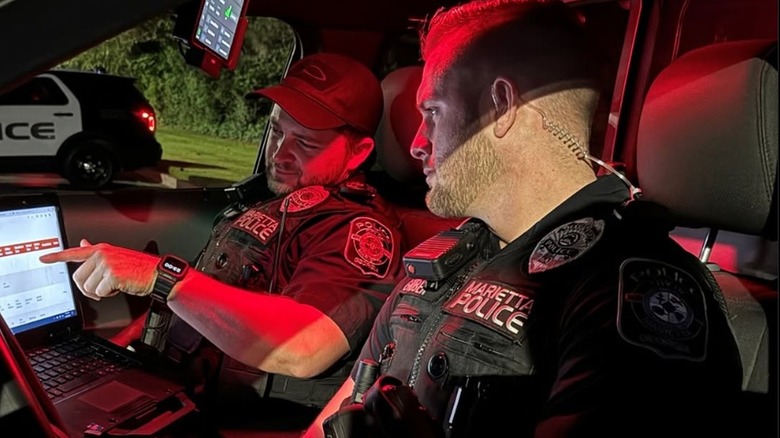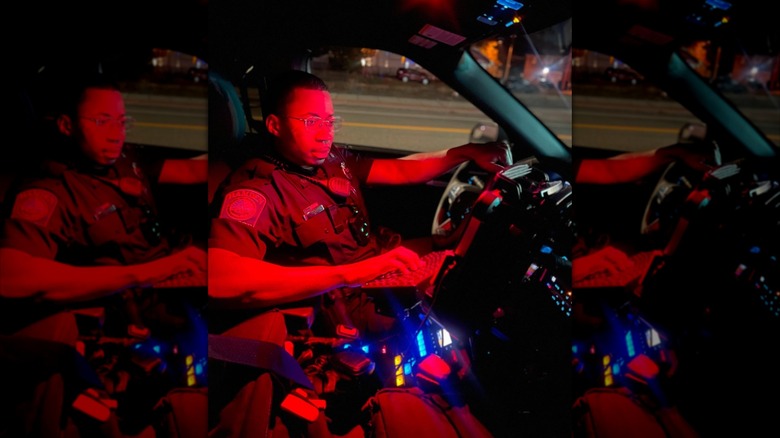Why Do Some Police Officers Use Red Interior Lights In Their Cars?
If you've driven by a police car parked on the side of the road at night and noticed a red light coming from inside, it's not because the officer is getting abducted by aliens or some other oddity. The real reason, while much more straightforward, is nonetheless quite interesting and helps minimize the danger to the officer.
Humans are best suited for going about their business in the daytime because we are diurnal (or active during the daytime) by nature. As such, our eyes have adapted to work better in the daylight than at night. The eyes of both diurnal and nocturnal creatures have pupils that dilate/constrict to control light, lenses that focus images, and nerves that transmit that image back to the brain. They also contain light-sensing cells called cones and rods. Humans have more cones than rods because their primary use is seeing color, while nocturnal animals have more rods than cones because they're better at picking up vague images in the inky blackness of night.
Natural night vision (as opposed to artificial night vision created by binoculars) is created not only by the dilation of the pupils but also by a protein called rhodopsin, which can't be made during daylight hours because it is too bright. Only once the eye has detected low levels of light (usually after 20 minutes, give or take) will it begin to produce rhodopsin. Unfortunately, it takes another 20 – 40 minutes before the rhodopsin kicks in to create night vision. What's more, a quick blast from bright white light — say from your standard flashlight, headlamp, or headlights — will destroy that night vision, and it'll take another hour or so before it returns.
Red lights maintain night vision
Red light has become the de facto light source used at night by various industries. For instance, Navy submarines switch to red light when using the periscope or going on watch duty at night. Astronomers use red lights while looking at the stars at night. Airplanes will often have red lights in their cockpits, and many police officers utilize red interior lights in their patrol cars. The one thing all of these jobs have in common is that the personnel rely on sustaining night vision during their duties.
Say a police officer pulls someone over at night. Since maintaining situational awareness is critical, the last thing they want to use to inspect a driver's license (or fill out digital paperwork) is standard white light. We know it immediately kills natural night vision, and thus puts the officer at risk. Not so with red light, which ultimately preserves night vision and allows officers to exit their vehicles without diminished sight.
For decades, your basic consumer flashlights have been powered by white light. Many of today's versions have retina-scalding light-emitting diodes (LED) at their heart, which are considerably brighter than old-timey bulbs. These LEDs are also found in the headlights of most new cars, and not without a great deal of controversy. These are great for routine, run-of-the-mill scenarios but not so ideal when your life depends on seeing at night because we know that even the briefest flash of white light destroys night vision. As it turns out, the cones in our eyes are less sensitive to longer wavelengths and, thus, able to pick up red light quite effectively.

